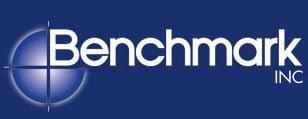 By Tom Irvine, RRC, CDT
By Tom Irvine, RRC, CDT
Vice President
In the August 2019 edition of Proof Points, we discussed FM Global’s 2018 overhaul of Loss Prevention Data Sheet 1-34. This data sheet serves as a hail design guide for new roofs and roof replacements on facilities that are insured by FM Global; or by other’s such as Global Risk Consultants and Risk Matrix that adhere to FMG standards. FMG’s changes included a notable expansion of the VSH zone geography, and significantly ramped-up accelerated membrane weathering and simulated hail impact testing required to achieve VSH system approval. For more information, please refer to Roof Design and Building Codes: Making the Pieces Fit by Tom Irvine.
Given a sizable percentage of Benchmark’s design projects need to be FMG-compliant, we often find ourselves educating Clients about VSH and the recent changes and implications. Typically, concerns about cost are raised early in these discussions. Please refer to a Case Study of the Cost of FM Global’s VSH Rating by Jeff Evans, which was posted on Benchmark’s website as a follow-up to the August 2019 narrative. While there is no doubt VSH compliance comes at a cost, this study describes our findings after bidding a VSH rated system alongside a Severe Hail (SH) rated system on the same project.
As described in Jeff’s article, in order to achieve a VSH rating for single-ply membrane systems, the use of generic oriented strand board (OSB) coverboard has been required over most of the past two years. It should be noted that adhered systems are required for VSH, as membrane failure occurs over any fastener plate locations. Several roof system manufacturers reached out to Benchmark and expressed concerns about adhering the membrane to the OSB and adhering the OSB itself. Frankly, the manufacturers were trying to gauge whether the design community would even be willing to specify these systems, given the sizable effort and expense involved in testing and approvals. Most made the decision to proceed; or risk having their single-ply systems be out of contention (or uncompetitive) for FM jobs in an ever-increasing portion of the US market.
In order to reduce risk associated with use of commodity grade OSB as the membrane substrate, manufacturers have scrambled for a way to return to the use of conventional and trusted roof assemblies. The two key objectives are to adhere a bare-back single-ply membrane to the substrate in lieu of a fleece-back membrane, and to use a traditional cover board instead of OSB. In particular, achieving a VSH rating with a bare back PVC has been an unprecedented challenge for those system manufacturers.
In early November 2020, approximately 30 Benchmark personnel attended a manufacturer’s virtual presentation that introduced some great news for the roofing industry. A new gypsum-based coverboard has been launched that will greatly expand the number of VSH RoofNav Assemblies beyond what is currently available (at this time in 2019, there were only about 600 total VSH assemblies). The product also signals the return of bare back single-ply membranes, including PVC, to FMG’s VSH zone. At the time of this writing, approximately 6,700 VSH assemblies have been added to RoofNav that contain the new board, about 1,800 of which are single-ply systems. Almost 650 of the single-ply systems allow bare back membrane, 35 of which are PVC. Reportedly, there are many other similar approvals in the que at FM, which should be added to RoofNav yet this year, including bare back KEE and others.
The new gypsum-based coverboard is a fiberglass mat-faced product, with a factory-primed facer. The board is available exclusively in 5/8” thickness and has a higher-density composition than other similar gypsum boards. The product is approximately 3 psf, which is considered “weighty” for a single component layer within a roof system. We believe this could be a consideration when deciding whether or not to specify the product, particularly in roof replacements where minimizing the new system weight may be necessary.
As codes and standards governing roof construction continue to evolve, the industry is under constant pressure to innovate, collaborate, test, list, market and produce compliant solutions. What has made VSH so challenging is that FM Global rolled-out the changes much quicker than the manufacturing community could react with options. The wave of new VSH assembly listings is a good indicator that the industry is catching up, and that is good news for many of Benchmark’s Clients.
